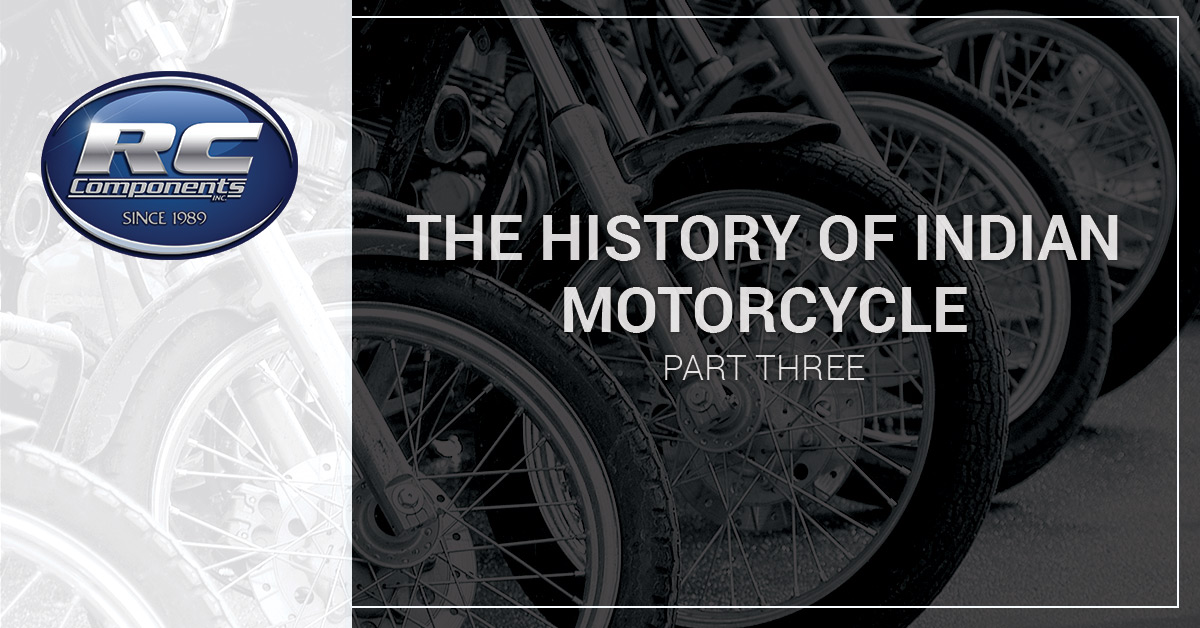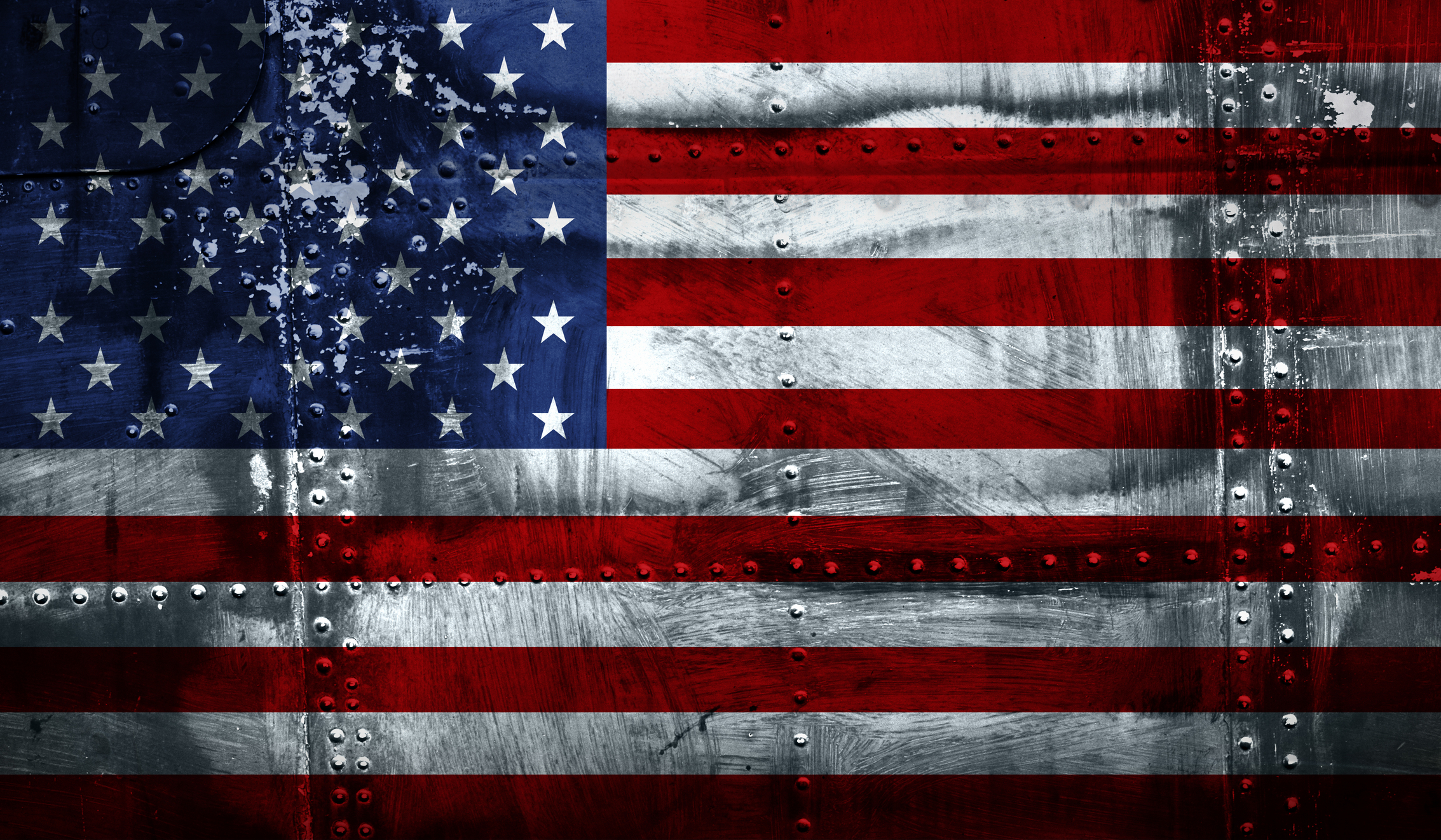The History of Indian Motorcycle: Part 3
Jan 16th 2018

In parts one and two of our multi-part series, we explored the formative years of Indian Motorcycle, including some of the achievements that contributed to the success of the company. Indian Motorcycle had been established as a reliable and high-quality company by 1915, and the company’s presence in American culture grew due to its role in World Wars I and II. In today’s post, we’ll continue to explore the history of Indian Motorcycle, paying close attention to the company’s role in the American war effort. RC Components proudly supplies aftermarket motorcycle wheels, mufflers, and slip-ons! If you’re thinking about customizing your Indian motorcycle, RC Components is your go-to resource – browse our catalog online today!
World War I

The United States entered World War I on April 6, 1917, and Indian Motorcycle contributed a large amount of resources to the war. The United States military began the war using the Indian Powerplus, which was equipped with a four-stroke V-twin engine. While Harley-Davidson contributed a large amount of resources to the war effort, Indian’s Powerplus models were reportedly easier to ride and maneuver. In total, Indian produced more than 50,000 motorcycles between 1917 and 1919. Many of these motorcycles were equipped with mounted machine guns and sidecars that allowed them to carry wounded soldiers to safety.
World War II
While Indian’s contribution to the success of the United States in World War I was invaluable, Indian motorcycles played a much smaller role during World War II. As we noted in a previous blog, Harley-Davidson’s WLA model was the primary motorcycle used by the military during World War II, but Indian still played a small role in the French and US militaries. Indian produced just over 10,000 motorcycles for the United States military in 1940, and roughly half of those were then sold to the French military. The primary model produced by Indian during World War II was the Model 841, and it was designed primarily for use in desert conditions. Unlike Harley-Davidson’s WLA, the Model 841 was not widely available to consumers after the war ended. The development of the Jeep as well as the success and prominence of Harley-Davidson’s WLA model left Indian motorcycles without a stable role in the military, and the company’s profits and prominence in public life quickly declined when the war ended.
Post-War Decline
1945 was the year that Indian Motorcycle was sold to Ralph B Rogers, a philanthropist who would go on to become chairman of the Public Broadcasting Service (PBS). Indian switched gears from wartime production to civilian motorcycle production, and their focus was primarily on manufacturing lightweight bikes. Indian hoped to compete with Harley-Davidson and the newest automobiles on the market, but none of the models they produced gained real traction with the public. After a series of manufacturing missteps that led to frequent breakdowns over the next several years, Indian Motorcycle ceased the production of all models in 1953.
We hope that you’ve enjoyed this post on the wartime history of Indian Motorcycle. Stay tuned for our next post, where we will explore the resurrection and surprising comeback of the company. RC Components is proud to provide aftermarket modifications for Harley-Davidson, Indian, and many other motorcycle brands – browse our catalog online today!

